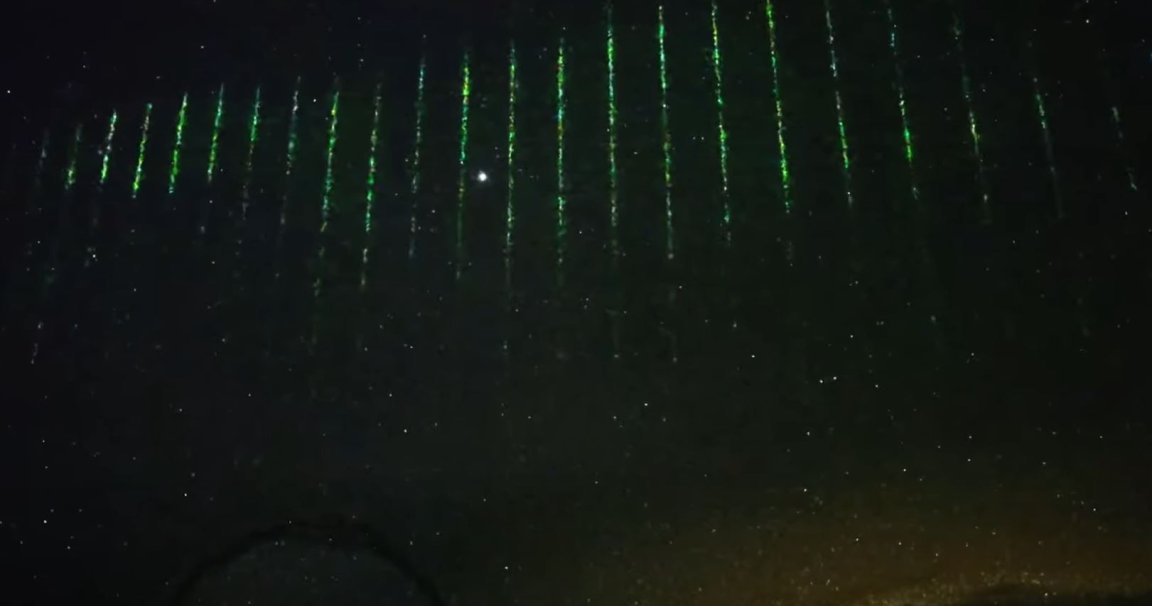
Rain On Me
It’s a bird! It’s a plane! It’s… a wall of lasers?
Hawaiians have been mystified by the bizarre light show that’s played across their skies in recent weeks — and as The Debrief reports, the “Matrix Code”-esque lasers’ origins are terrestrial in nature, even if they did come from space itself.
Captured on January 28 by the Subaru-Asahi camera that livestreams the night sky from the Big Island’s hotly-contested Mauna Kea volcano, the spectacle was initially believed to be the work of lasers from NASA’s Ice, Cloud, and land Elevation Satellite 2 (ICESat-2) orbiter.
Launched in 2018, ICESat-2’s mission is, as NASA describes, to compile a “comprehensive measurement of Earth’s surface” and map the surface out “in cool three-dimensional details.” Its only onboard instrument is the Advanced Topographic Laser Altimeter, which the punny agency refers to as ATLAS — and it’s that mythologically-monikered machine that is believed to have caused the “digital rain” effect seen from the island state.
However, NASA later said that its ICESat-2 was not the source of the lasers, with the National Astronomical Observatory of Japan saying that they likely originated with a Chinese satellite instead.
Pretty Lights
Even if it wasn’t the source of the laser light, ICESat-2 is still an intriguing satellite — and honestly kinda cool — not only because it’s pointed towards its planet of origin, but also because its uber-sensitive lasers are able to detect minute terrestrial details such as the thickness of the ice over the Arctic sea, helping scientists see how fast manmade climate change is ruining our planet.
As the Debrief notes, the ICESat-2’s laser light show isn’t the only trippy thing that the Subaru-Asahi camera has captured recently. Earlier in January, it also picked up a strange spiral in the sky that was the result of a SpaceX Falcon 9 rocket launch — though in that case, it wasn’t entirely unprecedented, as similar SpaceX spirals have been witnessed as far back as 2018.
Given that the double Japanese-branded camera was only started operations in 2021, these dueling headlines are proof positive that it’ll continue to garner headlines — and give us incredible photos — of the Hawaiian night sky.
Updated to clarify claims around the source of the mysterious light.
More on satellites: SpaceX to Launch “Hunter” Satellites for Targeting Rival Spacecraft